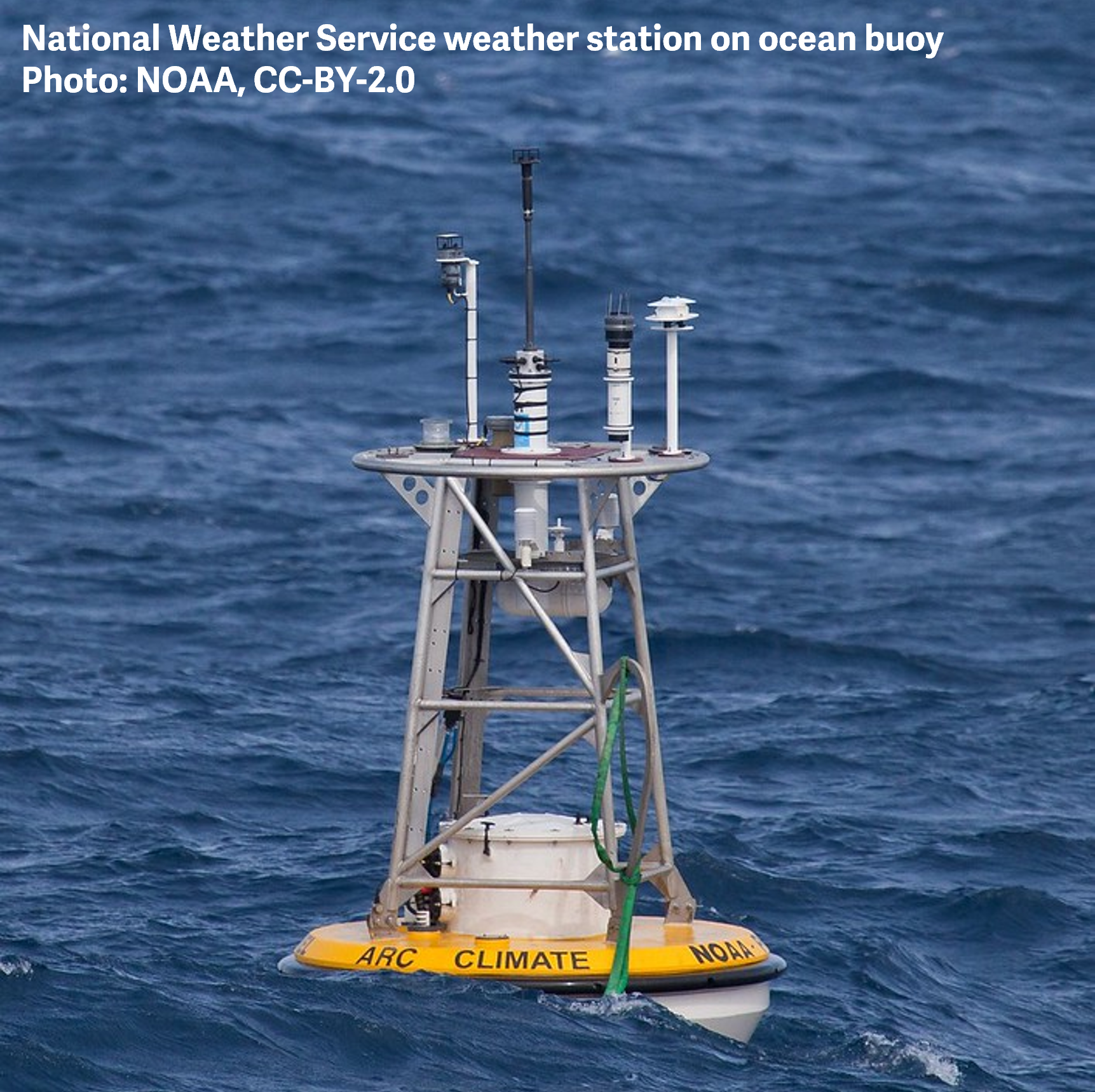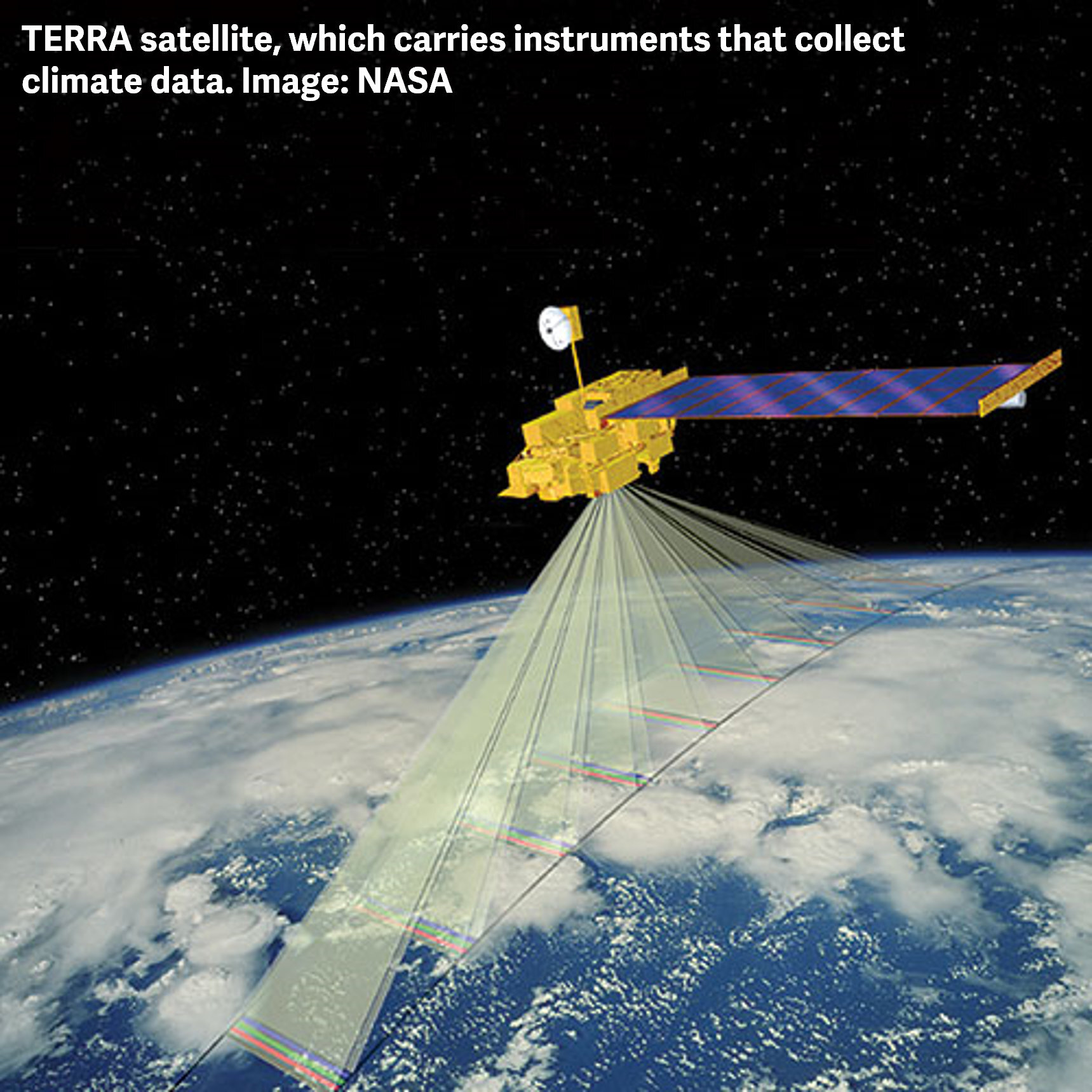How do we study climate change?
Scientists study climate change by collecting and analyzing data—from instruments on the ground, in the ocean, and on satellites; from changes in plant and animal life; and from evidence from the geologic record.
Scientists use these data as input to computer models that predict future climate changes. They also use these data to check the outputs of their models.
Climate Data from the past
How do we know what the Earth’s temperature was before the invention of modern thermometers, and before human beings even existed?
Surely our ancestors paid close attention to the weather, but in terms of records we have reliable climate data going back to the late 1800s, with the data since the 1950s being the most accurate. To get climate data from farther back in time, scientists rely on natural records that have preserved past climate conditions in chemical, physical, or biological signatures in fossils, glacial ice, and lake and ocean sediments. These are called climate proxies, and they substitute for direct measurements of past climates.
Climate Proxies
Sediment cores
Scientists travel out to sea, drill to the ocean floor, and extract sediment cores. Chemical analysis of tiny fossilized organisms in the cores reveals past temperatures, as far back as 200 million years ago.
Photos: Sediment core - Peter West, NSF; JOIDES Resolution ship - IODP; Benthic foraminifera - Jeff Delonge, USGS
Ice cores
Ice cores extracted from the Antarctic and Greenland ice sheets and mountain glaciers around the world can be precisely dated by annual layers of ice. The deeper you drill into the ice, the farther back in time you go. Chemical analysis of the ice and air trapped in tiny bubbles reveals past temperatures and chemical composition of the atmosphere.
Photo: Emily Stone, NSF
Fossil clam shells
Clam shells have annual growth rings, and clams respond to the water temperature around them by growing faster or slower. Measurements of the growth rings and chemical analysis of the shells of fossilized clams can tell us about past climates.
Photo: Jon Hendricks, Paleontological Research Institution
Tree rings
Tree rings that are more widely spaced indicate that the tree grew in a warm or wet year, and more narrowly spaced rings indicate cooler or drier years.
Photo: Couleur via Pixabay
Midges in lake sediments
The larvae of tiny insects—midges—that sank to the bottom of lakes and were trapped in sediment can reveal past air temperatures, because different types of midges thrived in different climates
Photo: Annika Lindqvist, CC BY 4.0
Fossil leaves
The edges of fossilized leaves can tell us something about ancient climates. In warmer climates, a higher proportion of leaves tend to have smooth edges. Conversely, in cooler climates, most leaves have toothed edges. The density of tiny pores in fossil leaves can tell us about the concentration of carbon dioxide in the atmosphere.
Photo: Helaina Blume, Paleontological Research Institution
Community Science
You can be a part of climate change research!
You can help study climate change. Community science projects are an important part of learning about how and why our climate is changing. When volunteers like you make observations and share them with scientists and other volunteers, both scientists and community members deepen their understanding of climate!
The Community Collaborative Rain, Hail, and Snow Network (CoCoRaHS)
Join CoCoRaHs and make precipitation observations from your backyard, and share them with a large network of observers around the country. Your data fill in important gaps between National Weather Service weather stations.
BioBlitzes!
Help document the diversity of life together with other enthusiasts in intense bursts of data collection. Join in with the Cayuga Nature Center’s seasonal bioblitzes if you’re in the Finger Lakes region, or find other events at iNaturalist.org.
Tree Phenology
Join a research project in phenology, the study of seasonal and cyclical changes in plant and animal life. You can observe trees at the Cayuga Nature Center that we’ve marked an registered with Nature’s Notebook, a project of the USA National Phenology Network. Or observe plants in your own yard or neighborhood.

















